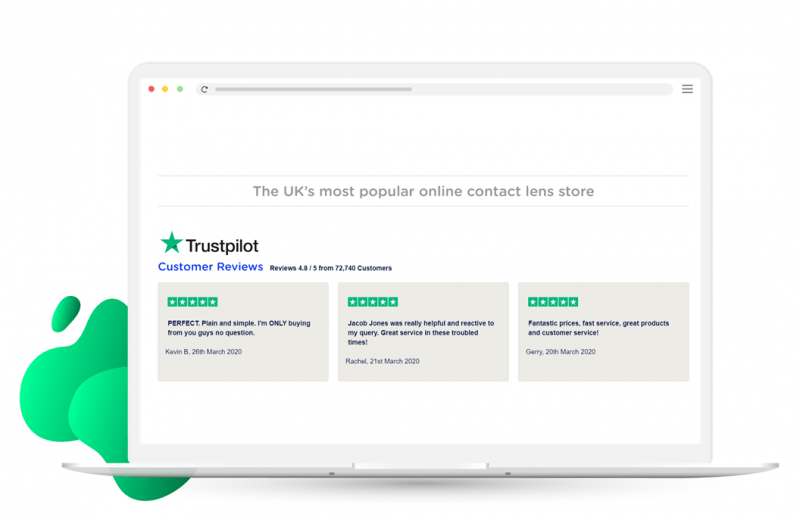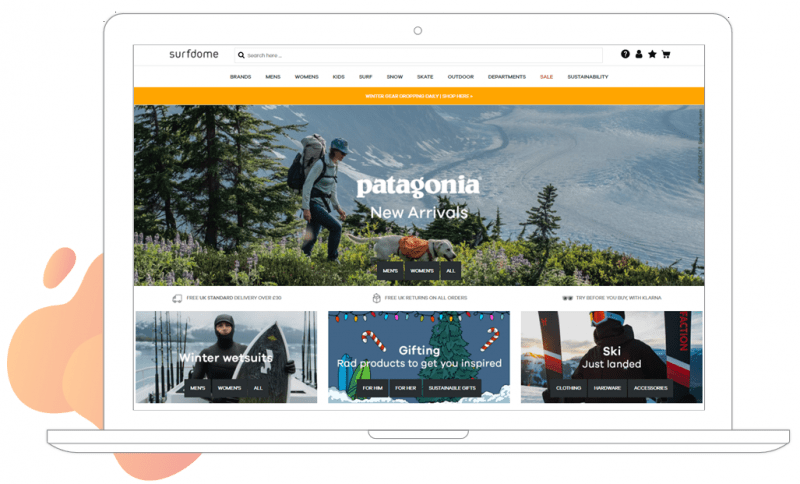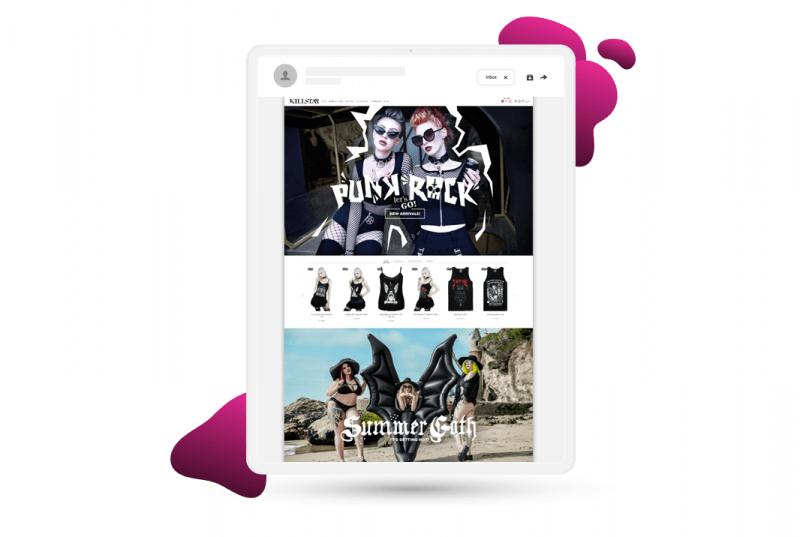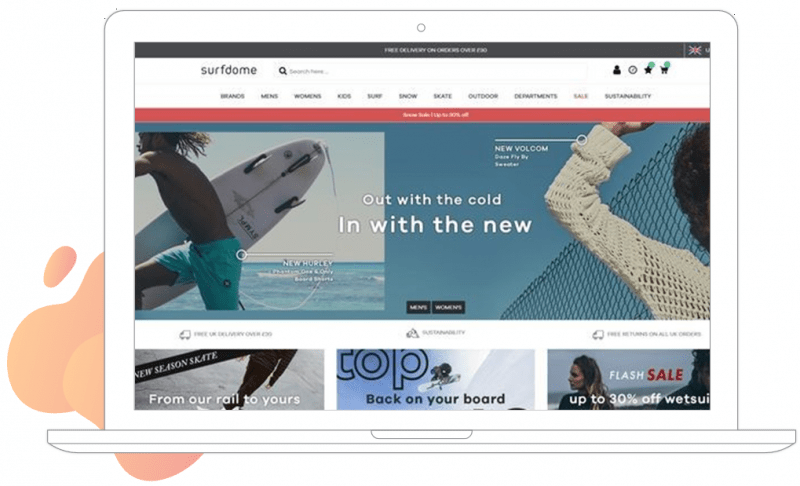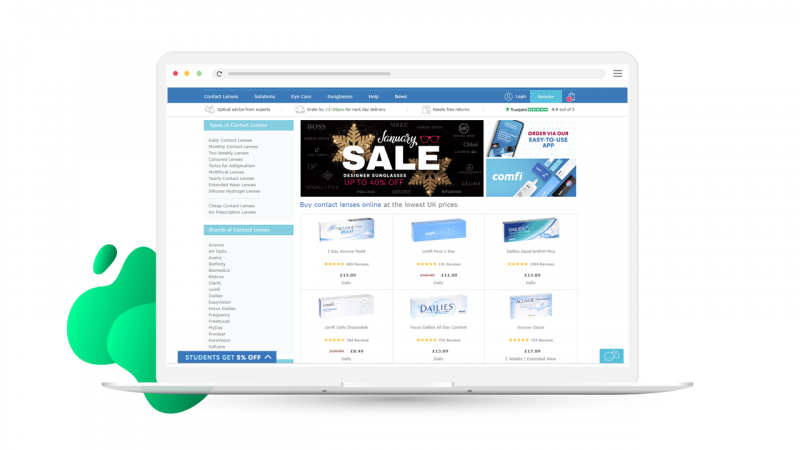Imagine walking into a store where a friendly salesperson greets you by name, remembers your favorite brands, and guides you directly to the products you’re most likely to love. That’s the magic of website personalization.
In today’s digital world, customers crave personalized experiences. 80% of shoppers are more likely to buy from brands that personalize their journey. Personalization is no longer a luxury; it’s a necessity to stay competitive.
This blog explores the power of website personalization by examining real-world examples from leading brands like Amazon, Sephora, and Zara. We will uncover the specific strategies they use and demonstrate how you can implement similar techniques to transform your own website.
Benefits of website personalization
Have you ever noticed how some websites seem to know exactly what you’re looking for? That’s the magic of website personalization. Personalization is a powerful strategy that can transform your online presence and boost your business. Let’s explore the incredible benefits of implementing website personalization and how it can enhance your user experience.
Enhanced user experience with website personalization examples
Imagine visiting a website that understands your preferences and interests. Website personalization tailors content, offers, and recommendations just for you, creating an engaging and relevant experience. When visitors feel recognized and valued, they’re likely to spend more time on your site, exploring what you have to offer.
Increased conversion rates
One of the most compelling reasons to embrace personalization is its impact on conversion rates. By showcasing personalized product recommendations and targeted offers, you can guide users effortlessly through their purchasing journey. Think about it: when customers see options that align with their specific needs, they are much more inclined to make a purchase.
Improved customer retention
Building loyalty is essential, and personalization plays a critical role in fostering that connection with your brand. When customers receive tailored communications and recommendations that speak directly to them, they’re more likely to return. This ongoing relationship not only enhances satisfaction but also encourages repeat purchases.
Increase engagement levels
Personalized experiences can elevate user engagement by providing relevant content that truly captures attention. Whether through personalized emails, targeted advertisements, or customized landing pages, tailored messaging can drive higher click-through rates and interactions. Engaged users are likely to share their experiences, amplifying your brand’s visibility.
Better insights and data utilization
When you implement personalization strategies, you start collecting valuable data on user behavior and preferences. This data can be a treasure trove of insights into customer trends, enabling you to refine your marketing strategies further. Understanding what resonates with your audience is key to making informed decisions about your offerings and campaigns.
Achieve a competitive advantage
Personalization can be your secret weapon in distinguishing your brand from competitors. By providing a unique and tailored experience, you can attract new customers and retain existing ones more effectively. Creating a strong personalization strategy can enhance your brand perception, positioning you as a leader in your industry.
Six website personalization examples
Here are six examples of website personalization that demonstrate how different brands effectively implement personalized strategies.
1. Behavioral-based product recommendations – Amazon
When customers visit Amazon, they are greeted with a personalized welcome page. Amazon leverages behavioral data to create highly personalized shopping experiences. It’s sophisticated product recommendation engine generates multiple personalization touchpoints based on customer behavior, ensuring that each user sees products tailored to their interests and shopping patterns.
Source: Amazon
Here are some key features of Amazon’s landing page personalization strategy:
- Gift ideas inspired by your shopping history: Amazon analyzes the customers past purchases and browsing behavior to suggest relevant gift options, making it easier for customers to find presents for others.
- Inspired by your shopping trends: This section showcases items that align with the customers recent shopping patterns, helping you discover new products that match their current interests.
- Keep shopping for: Amazon reminds the customer of products they’ve recently viewed or added to their cart, encouraging them to complete your purchase.
- More top picks for you: This feature presents a curated selection of items based on the customers overall shopping history and preferences.
- Most loved picks for you: Amazon highlights popular products that align with the customers tastes, combining social proof with personalization.
By implementing these behavioral-based recommendations, Amazon creates a tailored shopping experience that not only enhances user engagement but also drives sales by presenting relevant products at the right time. This approach demonstrates the power of using customer data to create a more intuitive and personalized ecommerce platform.
2. Behavioral-based targeting – Look Fabulous Forever
Source: Look Fabulous Forever email and web experience
Look Fabulous Forever, the renowned brand for makeup tailored to mature skin, leveraged behavioral targeting to elevate the customer experience and drive conversions. When shoppers saw an offer on Facebook, it prompted them to click through to the Look Fabulous Forever website. They were more likely to convert if they encountered the same offer on the site.
By ensuring that any targeted offers a shopper comes across on platforms like Facebook or through email are also reflected on the Look Fabulous Forever website, the company creates a consistent and personalized experience. This strategy reinforces the offer and encourages shoppers to take the desired action, such as making a purchase.
Additionally, Look Fabulous Forever targeted specific customer segments with exclusive offers. These promotions are sent via email and displayed on the website when those customers click through. The aim is to encourage these valuable customers to explore and try additional product ranges.
By customizing offers based on customer behavior and preferences, Look Fabulous Forever drives greater engagement and conversions across its marketing channels.
Look Fabulous Forever have used Fresh Relevance by Dotdigital’s powerful personalization features to achieve x10 ROI. Click below to see the platform in action.
WATCH DEMO
3. Location-based personalization – Zara
Zara has expertly integrated location-based personalization into its digital strategy, creating a seamless and customized shopping experience for customers around the globe. This approach begins as soon as a user accesses Zara’s website, showcasing the brand’s commitment to providing relevant and localized content.
When customers visit Zara’s international site, they are immediately welcomed by a location-aware popover. The website intelligently detects the user’s geographic location and presents two primary options: continue browsing the international site or redirect to the country-specific site, such as the one for the United Kingdom.
This smart popover ensures that customers can easily access the most relevant version of the site for their location, complete with local currency, shipping options, and region-specific collections.
Source: Zara
Additionally, Zara enhances its location-based popover by offering users to select their nearest physical store. This bridges the gap between online browsing and in-store shopping.
4. Purchase history personalization – Sephora
Sephora exemplifies the power of leveraging purchase history to create highly personalized shopping experiences. Its chosen for you feature showcases a sophisticated approach to tailoring product recommendations based on individual customer preferences and past purchases.
Source: Sephora
Sephora’s system offers more than just basic product matching; it has a sophisticated understanding of customer brand preferences. It identifies the brands that a customer favors and highlights new or popular items from these preferred lines. This strategy not only strengthens customer loyalty to their chosen brands but also introduces them to complementary products they may enjoy.
Furthermore, Sephora’s personalization engine provides category-based suggestions. By recognizing the types of products a customer typically purchases, whether in skincare, makeup, or fragrance, the system can recommend related items within these categories and suggest complementary products to enhance their beauty routine.
By using purchase history to create personalized experiences, Sephora streamlines product discovery and fosters customer loyalty. This approach illustrates the effectiveness of leveraging historical data to anticipate customer needs and preferences, ultimately driving engagement and sales in the competitive beauty market.
5. Real-time behavior personalization – Etsy
Etsy, the global marketplace for unique and creative goods, is a prime example of how real-time behavior personalization can enhance the online shopping experience. By using advanced algorithms that adapt dynamically to users’ browsing patterns and interactions, Etsy creates an engaging and tailored environment that captivates shoppers and encourages them to return.
When a user visits Etsy’s homepage, they are welcomed with a personalized storefront reflecting their immediate interests and browsing history. This real-time personalization is shown through several key features:
Source Etsy
Recent activity: This section is prominently displayed at the top of the page, showcasing products the user has recently explored. It serves as a convenient shortcut, allowing shoppers to quickly revisit items they found interesting without extensive searching. This feature enhances the user experience and increases the likelihood of conversions by keeping recently viewed items front and center.
Source: Etsy
Because you viewed: This intelligent feature presents products related to items the user has engaged with recently. By doing so, Etsy demonstrates its ability to understand and anticipate user interests in real time, effectively guiding shoppers through a curated discovery process tailored to their current session.
By implementing sophisticated real-time behavior personalization, Etsy transforms its platform into a smart, adaptive marketplace that evolves with each user interaction. This approach significantly boosts user engagement and the time spent on the site, while also increasing the likelihood of conversions by presenting the right products at just the right moment.
6. Real-time personalization – Vision Direct
Vision Direct, a leading online retailer of contact lenses, has effectively utilized real-time personalization to enhance the customer experience. By collaborating with Fresh Relevance, the company has implemented strategies that significantly improve email acquisition and product recommendations.
Recognizing the importance of building a loyal customer base, Vision Direct has introduced GDPR-compliant pop-up forms on its website landing page. These strategically timed pop-ups encourage new website visitors to register their email addresses, allowing the brand to nurture leads and develop long-lasting relationships. By collecting valuable customer data, Vision Direct can deliver highly targeted and personalized marketing campaigns.
Source: Vision Direct
To further optimize its email marketing efforts, Vision Direct has integrated Fresh Relevance’s dynamic SmartBlocks. These powerful tools automatically populate emails with relevant product recommendations, including:
- Recently viewed products: Reminding customers of items they’ve shown interest in.
- Latest purchases: Suggesting complementary products or upsells.
- Crowd-sourced recommendations: Leveraging social proof to influence purchasing decisions.
By embracing these innovative website personalization strategies, Vision Direct has improved its email acquisition rates and enhanced customer satisfaction and loyalty. Their success story showcases the potential of real-time personalization to drive business growth and deliver exceptional customer experiences.
14 homepage personalization examples that keep shoppers coming back
To get the most out of your website personalization strategy, it’s crucial that shoppers receive a one-to-one experience every time they interact with your company. Often, that starts with the homepage.
We’ve compiled 14 homepage personalization examples from across the web to help you:
1. Reassure and convert new customers
Your website is the go-to source of information about your brand and products. Make the most of this opportunity by building trust and helping visitors find what they’re looking for.
Build trust with social proof
Research shows that more than one in three consumers won’t purchase if an online store doesn’t show product ratings and reviews.
Vision Direct builds trust with new shoppers immediately and reduces the risk of high bounce rate by displaying their store rating on the homepage alongside customer reviews.

Source: visiondirect.co.uk
Inspire with social media
New customers might be unsure of what they can expect from your brand. Use social media feeds to help shoppers imagine how they will feel once they own one of your products as part of your eCommerce personalization strategies.
Even if a visitor isn’t ready to make a purchase, they could be inspired to micro-convert by following your social media channels.
This is a great way to show how your products look in real-life situations.
Help new visitors find products
When someone comes to your site for the first time, you won’t be able to use their past behavior to gauge their interests. This doesn’t mean you can’t show relevant product recommendations.
Consider using crowdsourced “best-sellers” to show the products your customers tend to be interested in. Including best-sellers on the homepage and category pages can be particularly effective eCommerce personalization, as without the ability to touch and see products in the flesh, new customers are more likely to be swayed by other shoppers’ opinions.
Victorian Plumbing combines high-converting social proof and product recommendation tactics to inspire website visitors to check out their popular items.

Source: victorianplumbing.co.uk
Learn more: 8 product recommendation examples for every stage of the customer journey
Even if you don’t have all the data about a customer’s individual interests, you can leverage information on contextual data, such as the shopper’s location. Depending on the nature of your products, you can show product recommendations relevant to the region, season or weather where the customer is shopping.
Surfdome uses a bright orange banner on the homepage to promote the release of their winter gear, as well as highlighting their range of winter wetsuits and ski products on their eCommerce website.

Source: surfdome.co.uk
Learn more: 3 surprising ways to drive sales using location
Killstar recommends products based on the visitor’s real-time activity, suggesting products for males or females depending on what the shopper has browsed. This allows Killstar to keep new shoppers engaged by showing them products that are most likely to spark their interest, despite not having any historical purchase data.

Source: Killstar.com
Recommending new arrivals is especially effective in sectors driven by fast-moving trends, such as fashion and beauty. By giving top billing to their new arrivals on the homepage banner, Surfdome builds excitement around the shopping experience and plays to our built-in expectation that something new must be better than what came before.

Source: surfdome.co.uk
2. Turn one-time visitors into subscribers
Special offers are a great way to incentivize first-time shoppers to stay on your site, instead of jumping to a competitor.
Offers also help you identify shoppers via their email address. Once someone has registered, you can maintain a valuable relationship and increase customer engagement by sending newsletters and triggered emails as part of your personalization efforts– for instance, cart and browse abandonment emails.
The data capture form can be placed within the web page, or appear as a popover or slider.
Feel Good Contacts uses targeted data capture popovers to deliver different messages to different customers as part of their personalized content. New customers are presented with a popover offering 10% off their first purchase, while students are informed about the company’s student discount. By showing website visitors the most relevant deals, Feel Good Contacts encourages more email sign-ups. The popover also comes in two versions – a small banner that expands on click and an exit-intent banner across the whole page. This tactic has paid off for Feel Good Contacts, as they’ve seen a 333% increase in sign-ups month-over-month.

Source: feelgoodcontacts.com
Test the timing and content of pop-ups to find out what works for your visitors. If you’re using a full-page pop-up, make sure visitors have enough time to view your content before asking them to sign up.
Learn more: How to create popovers that improve the customer experience
3. Help returning visitors find what they’re looking for
Once you have a shopper’s attention, it’s time to deliver an exceptional customer experience. This means anticipating customers’ needs and fulfilling them as quickly as possible.
Show the shopper’s last browsed products.
Where a customer has browsed your website without buying or carting a product, use website personalization by helping them pick up where they left off by showing their recently viewed products.
Cottages.com uses a popover to remind visitors of their last viewed product, including an image of the product to help jog their memory. Shoppers will appreciate the gesture, as they don’t have to waste time finding the product they searched for last time.

Source: Cottages.com
In addition to their welcome back popover, Cottages.com uses customers’ past browse and purchase data to tailor their homepage with personalized product recommendations, increasing their chances of moving the customer through to a product page by only showing them what they’re interested in.
Give a helping hand to likely purchasers
The most common way to deal with cart abandonment is by sending a real-time email reminder. But you can also use website personalization to recover this lost revenue.
Wayfair features carted products on the homepage to encourage customers to check out. It’s important to include the main product details such as image and price, so the customer can quickly decide to complete the purchase.

Source: wayfair.co.uk
4. Retain and re-engage existing customers
Retaining customers is often more cost-effective than acquiring them. By leveraging what you know about existing shoppers, you can deliver an individual customer experience that keeps them coming back for more.
Give customers more of what they want
Personalized banners grab customers’ attention with highly tailored content. When visitors are immediately presented with relevant information, they’re less likely to bounce. For example, you can show banners based on their favorite product category:

Zee & Co puts the spotlight on specific brands across their navigation bars as part of their eCommerce personalization strategy. Since customers tend to prefer brands or products they have seen multiple times, harness the power of familiarity for returning visitors by tailoring the brand suggestion to the customer’s most browsed or purchased brand.

Source: zeeandco.co.uk
Learn more: 11 Exciting Examples of Navigation Bars with Dynamic Content
Customized images can also drive up-sells and cross-sells. Using data about the customer’s purchase history, you can predict what shoppers are likely to need – and when they will need it.

For shoppers who are very engaged but haven’t made a purchase for a while, you can use special offers and coupons to nudge them towards checking out.
Use dynamic countdown timers alongside coupons to encourage urgency.

Take personalization to the next level
For a truly one-to-one customer experience, personalization should extend far beyond the homepage. Search pages, landing pages and product detail pages can all be customized to reflect each shopper’s interests and lifecycle stage.
Real-time emails based on customer behavior take personalization to the next level. Customers can be reminded about carted products, notified when their favorite items have dropped in price, and alerted when a product they missed out on comes back in stock.
Learn more about building customized experiences for retail customers in our dedicated guide.
Start personalizing your website today
Every visitor to your website is unique, and they deserve an experience that resonates with them on a personal level. By customizing your site to reflect individual preferences, you’re not just enhancing user experience; you’re forging deeper connections that lead to increased engagement and a stronger bottom line.
As customer expectations continue to evolve, prioritizing website personalization will set you apart from the competition. It’s not just about keeping up; it’s about leading the way in creating meaningful interactions that foster brand loyalty and drive sustainable growth.
With Fresh Relevance by Dotdigital, launching AI-powered product recommendations and other dynamic content formats on web has never been easier. Watch a demo today and see just how simple it can be to captivate and convert website visitors with personalization.
WATCH WEB PERSONALIZATION IN ACTION
By Dominic Carelse
Marketing Manager






